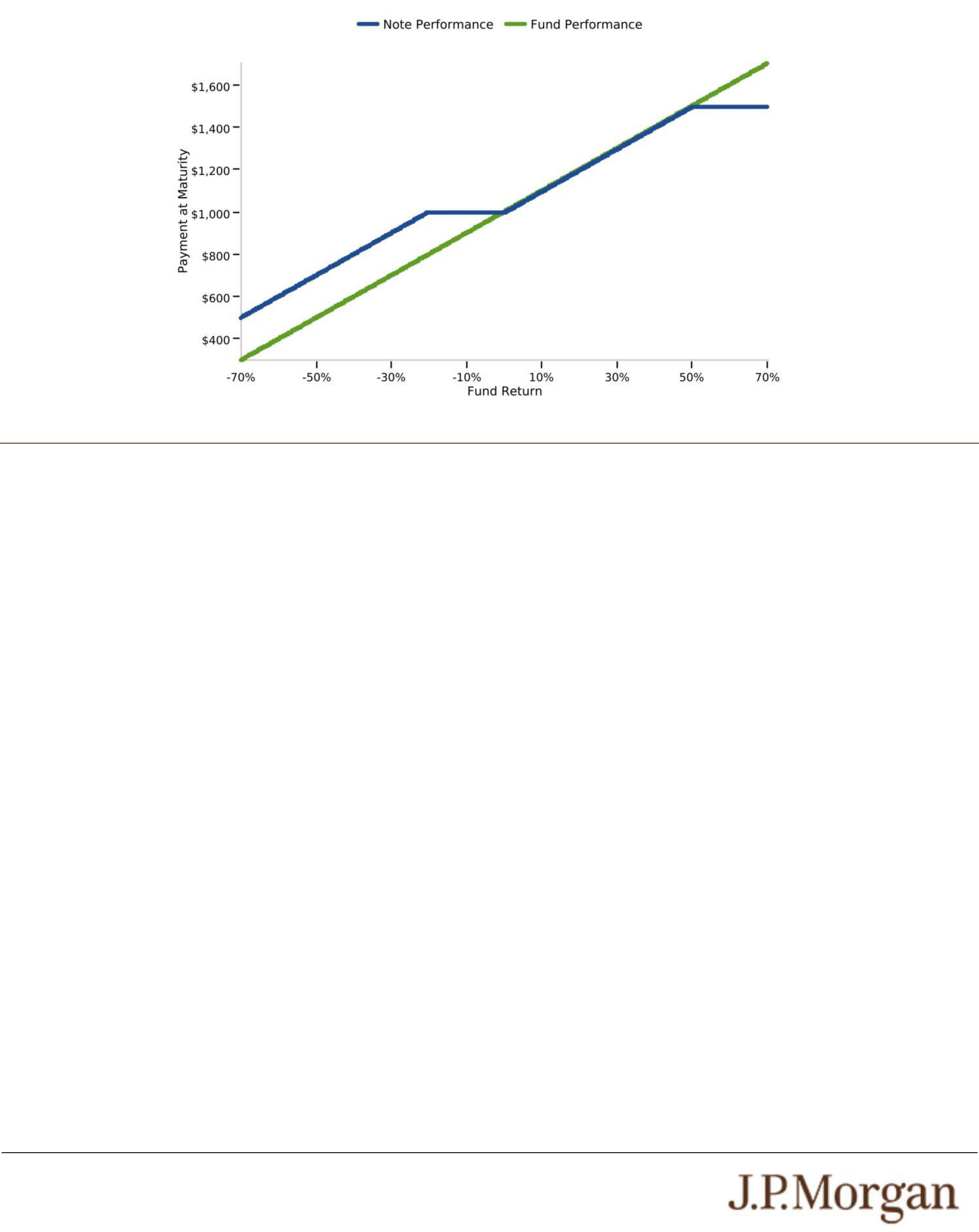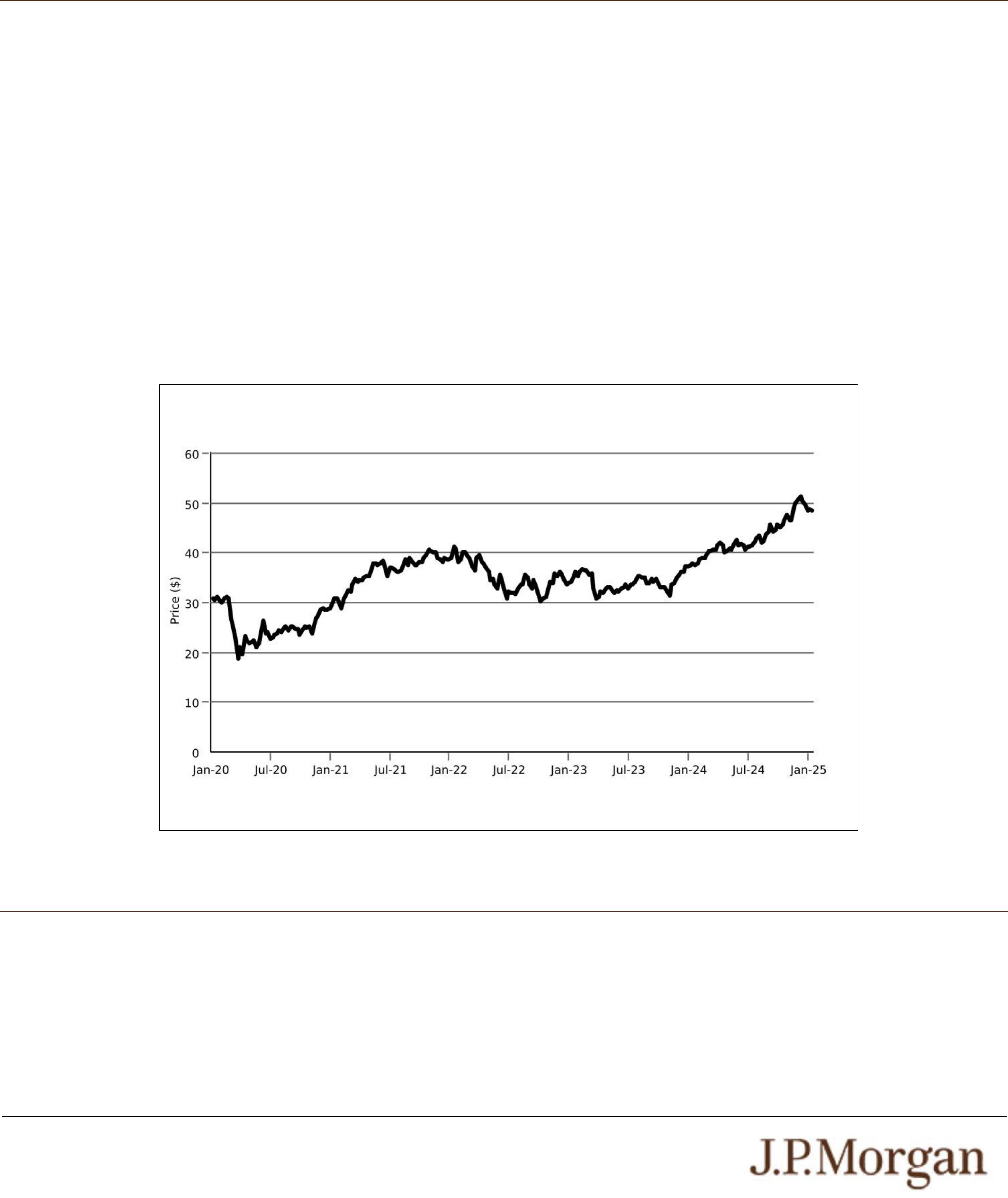● RISKS ASSOCIATED WITH THE FINANCIAL SECTOR —
All or substantially all of the equity securities held by the Fund are issued by companies whose primary line of business is directly
associated with the financial sector. As a result, the value of the notes may be subject to greater volatility and be more adversely
affected by a single economic, political or regulatory occurrence affecting this sector than a different investment linked to securities
of a more broadly diversified group of issuers. Financial services companies are subject to extensive government regulation, which
may limit both the amounts and types of loans and other financial commitments they can make, the interest rates and fees they can
charge, the scope of their activities, the prices they can charge and the amount of capital they must maintain. Profitability is largely
dependent on the availability and cost of capital funds and can fluctuate significantly when interest rates change or due to
increased competition. In addition, deterioration of the credit markets generally may cause an adverse impact in a broad range of
markets, including U.S. and international credit and interbank money markets generally, thereby affecting a wide range of financial
institutions and markets. Certain events in the financial sector may cause an unusually high degree of volatility in the financial
markets, both domestic and foreign, and cause certain financial services companies to incur large losses. Securities of financial
services companies may experience a dramatic decline in value when these companies experience substantial declines in the
valuations of their assets, take action to raise capital (such as the issuance of debt or equity securities), or cease operations. Credit
losses resulting from financial difficulties of borrowers and financial losses associated with investment activities can negatively
impact the financial sector. Insurance companies may be subject to severe price competition. Adverse economic, business or
political developments could adversely affect financial institutions engaged in mortgage finance or other lending or investing
activities directly or indirectly connected to the value of real estate. These factors could affect the financial sector and could affect
the value of the equity securities held by the Fund and the price of the Fund during the term of the notes, which may adversely
affect the value of your notes.
● THE ANTI-DILUTION PROTECTION FOR THE FUND IS LIMITED —
The calculation agent will make adjustments to the Share Adjustment Factor for certain events affecting the shares of the Fund.
However, the calculation agent will not make an adjustment in response to all events that could affect the shares of the Fund. If an
event occurs that does not require the calculation agent to make an adjustment, the value of the notes may be materially and
adversely affected.
● LACK OF LIQUIDITY —
The notes will not be listed on any securities exchange. Accordingly, the price at which you may be able to trade your notes is likely
to depend on the price, if any, at which JPMS is willing to buy the notes. You may not be able to sell your notes. The notes are not
designed to be short-term trading instruments. Accordingly, you should be able and willing to hold your notes to maturity.
● THE ESTIMATED VALUE OF THE NOTES IS LOWER THAN THE ORIGINAL ISSUE PRICE (PRICE TO PUBLIC) OF THE
NOTES —
The estimated value of the notes is only an estimate determined by reference to several factors. The original issue price of the
notes exceeds the estimated value of the notes because costs associated with selling, structuring and hedging the notes are
included in the original issue price of the notes. These costs include the selling commissions, the projected profits, if any, that our
affiliates expect to realize for assuming risks inherent in hedging our obligations under the notes and the estimated cost of hedging
our obligations under the notes. See “The Estimated Value of the Notes” in this pricing supplement.
● THE ESTIMATED VALUE OF THE NOTES DOES NOT REPRESENT FUTURE VALUES OF THE NOTES AND MAY DIFFER
FROM OTHERS’ ESTIMATES —
See “The Estimated Value of the Notes” in this pricing supplement.
● THE ESTIMATED VALUE OF THE NOTES IS DERIVED BY REFERENCE TO AN INTERNAL FUNDING RATE —
The internal funding rate used in the determination of the estimated value of the notes may differ from the market-implied funding
rate for vanilla fixed income instruments of a similar maturity issued by JPMorgan Chase & Co. or its affiliates. Any difference may
be based on, among other things, our and our affiliates’ view of the funding value of the notes as well as the higher issuance,
operational and ongoing liability management costs of the notes in comparison to those costs for the conventional fixed income
instruments of JPMorgan Chase & Co. This internal funding rate is based on certain market inputs and assumptions, which may
prove to be incorrect, and is intended to approximate the prevailing market replacement funding rate for the notes. The use of an
internal funding rate and any potential changes to that rate may have an adverse effect on the terms of the notes and any
secondary market prices of the notes. See “The Estimated Value of the Notes” in this pricing supplement.
● THE VALUE OF THE NOTES AS PUBLISHED BY JPMS (AND WHICH MAY BE REFLECTED ON CUSTOMER ACCOUNT
STATEMENTS) MAY BE HIGHER THAN THE THEN-CURRENT ESTIMATED VALUE OF THE NOTES FOR A LIMITED TIME
PERIOD —
We generally expect that some of the costs included in the original issue price of the notes will be partially paid back to you in
connection with any repurchases of your notes by JPMS in an amount that will decline to zero over an initial predetermined period.
See “Secondary Market Prices of the Notes” in this pricing supplement for additional information relating to this initial period.
Accordingly, the estimated value of your notes during this initial period may be lower than the value of the notes as published by
JPMS (and which may be shown on your customer account statements).
● SECONDARY MARKET PRICES OF THE NOTES WILL LIKELY BE LOWER THAN THE ORIGINAL ISSUE PRICE OF THE
NOTES —
Any secondary market prices of the notes will likely be lower than the original issue price of the notes because, among other
things, secondary market prices take into account our internal secondary market funding rates for structured debt issuances and,
also, because secondary market prices may exclude selling commissions, projected hedging profits, if any, and estimated hedging
costs that are included in the original issue price of the notes. As a result, the price, if any, at which JPMS will be willing to buy the
notes from you in secondary market transactions, if at all, is likely to be lower than the original issue price. Any sale by you prior to
the Maturity Date could result in a substantial loss to you.









